Lee Coffey
Using Deep Learning to Detect Digitally Encoded DNA Trigger for Trojan Malware in Bio-Cyber Attacks
Feb 23, 2022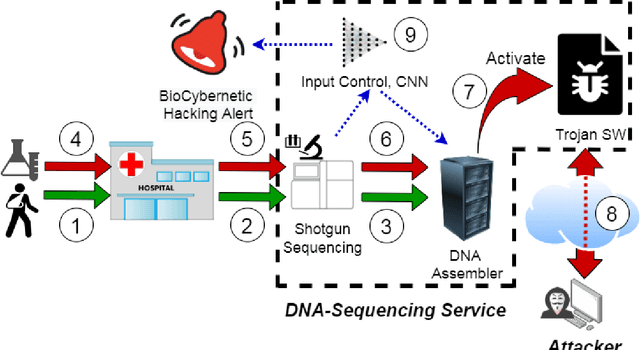
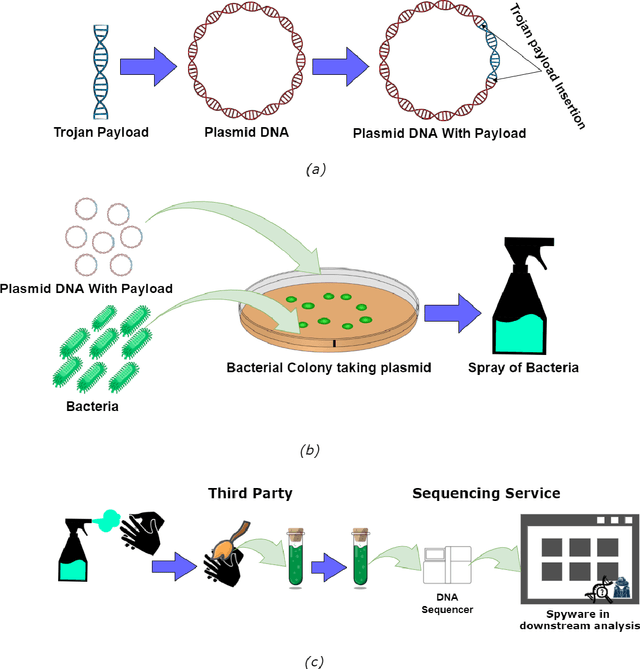
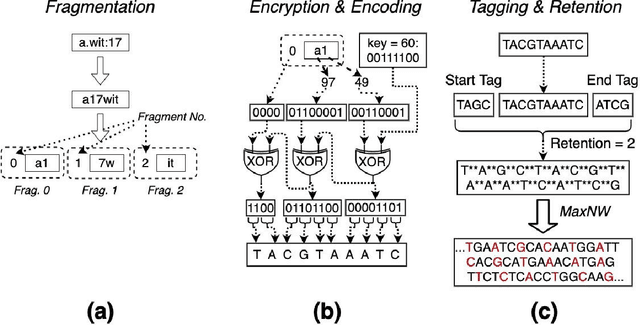

Abstract:This article uses Deep Learning technologies to safeguard DNA sequencing against Bio-Cyber attacks. We consider a hybrid attack scenario where the payload is encoded into a DNA sequence to activate a Trojan malware implanted in a software tool used in the sequencing pipeline in order to allow the perpetrators to gain control over the resources used in that pipeline during sequence analysis. The scenario considered in the paper is based on perpetrators submitting synthetically engineered DNA samples that contain digitally encoded IP address and port number of the perpetrators machine in the DNA. Genetic analysis of the samples DNA will decode the address that is used by the software trojan malware to activate and trigger a remote connection. This approach can open up to multiple perpetrators to create connections to hijack the DNA sequencing pipeline. As a way of hiding the data, the perpetrators can avoid detection by encoding the address to maximise similarity with genuine DNAs, which we showed previously. However, in this paper we show how Deep Learning can be used to successfully detect and identify the trigger encoded data, in order to protect a DNA sequencing pipeline from trojan attacks. The result shows nearly up to 100% accuracy in detection in such a novel Trojan attack scenario even after applying fragmentation encryption and steganography on the encoded trigger data. In addition, feasibility of designing and synthesizing encoded DNA for such Trojan payloads is validated by a wet lab experiment.
Microfluidic-based Bacterial Molecular Computing on a Chip
Apr 15, 2021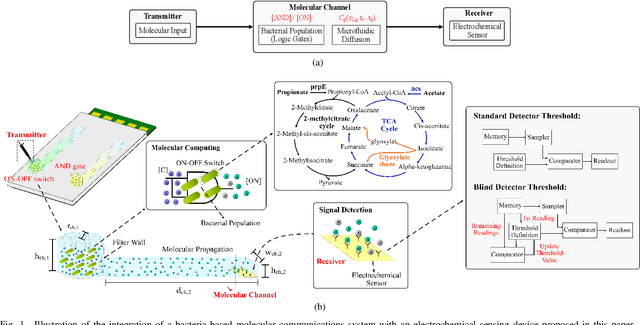

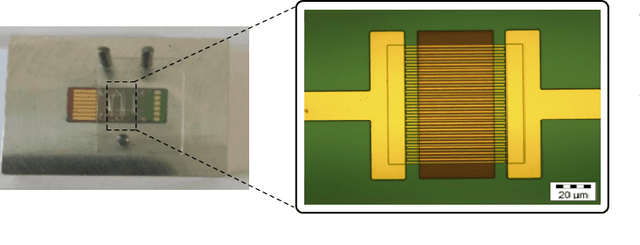
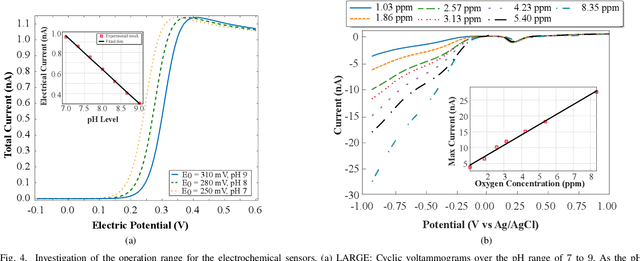
Abstract:Biocomputing systems based on engineered bacteria can lead to novel tools for environmental monitoring and detection of metabolic diseases. In this paper, we propose a Bacterial Molecular Computing on a Chip (BMCoC) using microfluidic and electrochemical sensing technologies. The computing can be flexibly integrated into the chip, but we focus on engineered bacterial AND Boolean logic gate and ON-OFF switch sensors that produces secondary signals to change the pH and dissolved oxygen concentrations. We present a prototype with experimental results that shows the electrochemical sensors can detect small pH and dissolved oxygen concentration changes created by the engineered bacterial populations' molecular signals. Additionally, we present a theoretical model analysis of the BMCoC computation reliability when subjected to unwanted effects, i.e., molecular signal delays and noise, and electrochemical sensors threshold settings that are based on either standard or blind detectors. Our numerical analysis found that the variations in the production delay and the molecular output signal concentration can impact on the computation reliability for the AND logic gate and ON-OFF switch. The molecular communications of synthetic engineered cells for logic gates integrated with sensing systems can lead to a new breed of biochips that can be used for numerous diagnostic applications.
 Add to Chrome
Add to Chrome Add to Firefox
Add to Firefox Add to Edge
Add to Edge